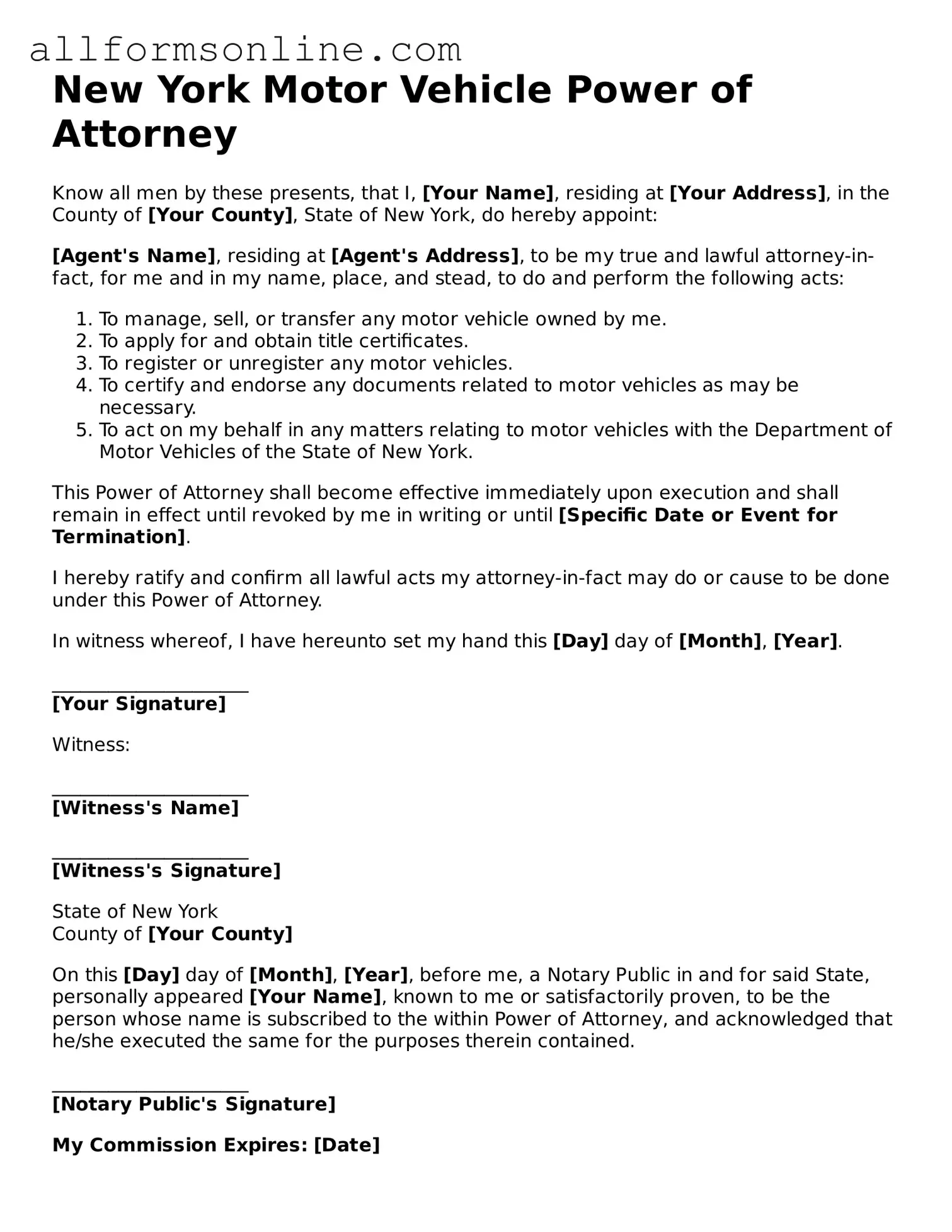What is a New York Motor Vehicle Power of Attorney form?
The New York Motor Vehicle Power of Attorney form is a legal document that allows one person, known as the principal, to designate another person, called the agent, to handle specific motor vehicle-related transactions on their behalf. This can include tasks such as signing documents for vehicle registration, title transfers, and other dealings with the New York Department of Motor Vehicles (DMV).
Why would I need a Motor Vehicle Power of Attorney?
You may need this form if you are unable to personally attend to motor vehicle transactions due to reasons such as being out of state, illness, or other commitments. By appointing an agent, you ensure that your vehicle-related matters can still be managed efficiently without your direct involvement.
How do I complete the Motor Vehicle Power of Attorney form?
To complete the form, you need to provide your name and address as the principal, along with the name and address of your chosen agent. You will also need to specify the powers you are granting to the agent, which can be general or limited to specific transactions. After filling out the form, both you and your agent must sign it, and it may need to be notarized for it to be valid.
Is there a specific format for the Motor Vehicle Power of Attorney form?
Yes, New York State has a specific form that must be used. You can obtain this form from the New York DMV website or at their offices. It is important to use the official form to ensure that it meets all legal requirements and is accepted by the DMV.
Does the Motor Vehicle Power of Attorney need to be notarized?
While notarization is not always required, it is highly recommended. Notarizing the document adds an extra layer of authenticity and can help prevent disputes regarding the validity of the power of attorney. Some transactions at the DMV may require notarization, so it is best to check the specific requirements for your situation.
Can I revoke a Motor Vehicle Power of Attorney?
Yes, you can revoke a Motor Vehicle Power of Attorney at any time as long as you are competent to do so. To revoke it, you should create a written notice stating your intention to revoke the power of attorney and provide copies to your agent and any relevant parties, such as the DMV.
What happens if my agent cannot perform their duties?
If your agent is unable to fulfill their duties, you may need to appoint a new agent. It is wise to have a backup agent in mind when creating the power of attorney. If the original agent can no longer serve, you can execute a new power of attorney naming someone else.
How long is the Motor Vehicle Power of Attorney valid?
The validity of the Motor Vehicle Power of Attorney generally lasts until you revoke it, or until the specific task for which it was created has been completed. However, if you anticipate needing it for an extended period, it’s a good idea to review it periodically to ensure it still meets your needs.
Can I use the Motor Vehicle Power of Attorney form for vehicles registered in other states?
No, the New York Motor Vehicle Power of Attorney form is specifically designed for use with vehicles registered in New York. If you have vehicles registered in other states, you will need to check the requirements for those states, as they may have different forms and regulations.
Where do I submit the Motor Vehicle Power of Attorney form?
The completed Motor Vehicle Power of Attorney form should be submitted to the New York DMV along with any other required documents for the specific transaction you are authorizing your agent to handle. You can also keep a copy for your records.
